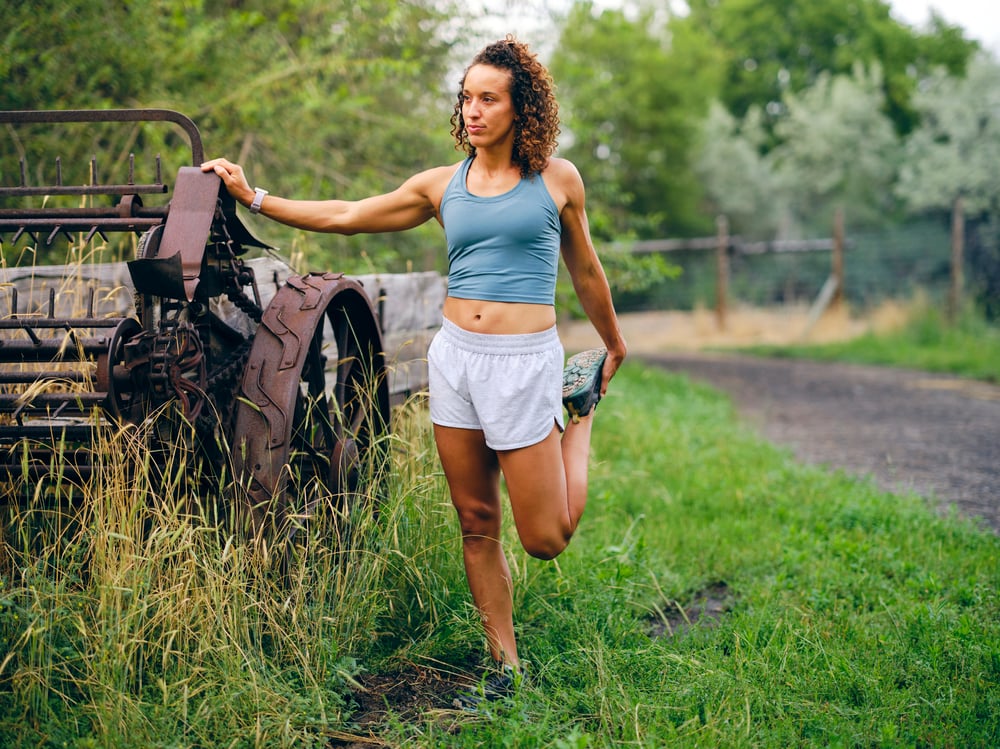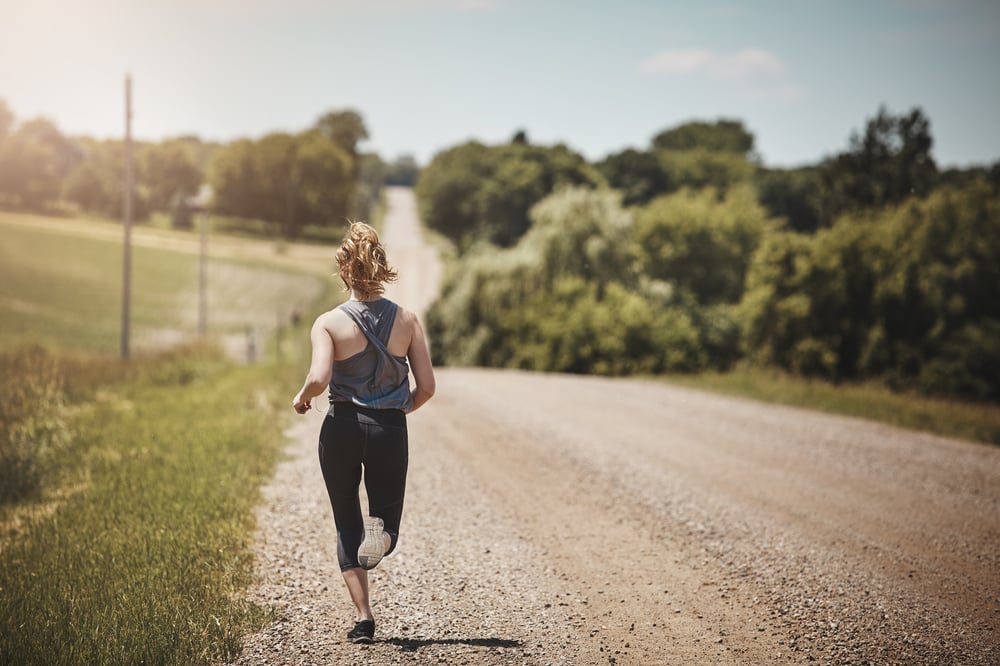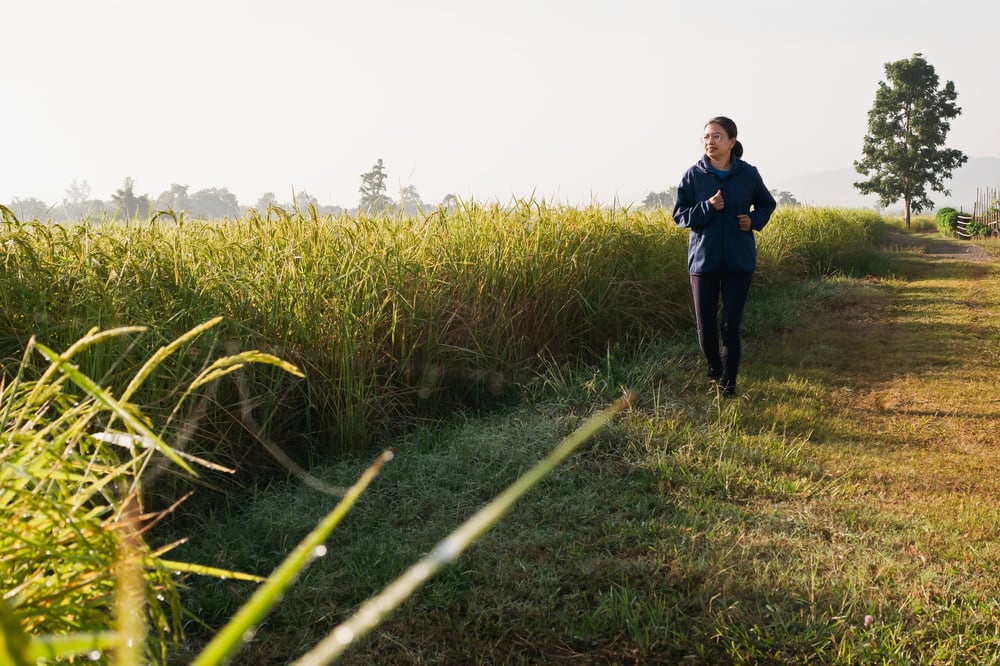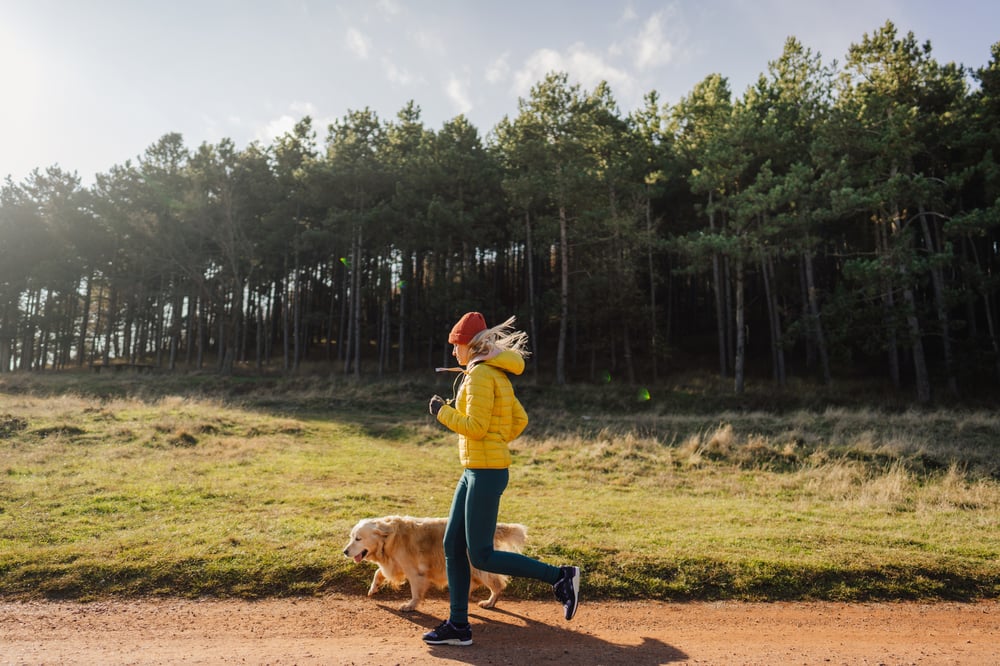Once you start running on country roads, forested trails and other wide open spaces you'll never want to go back to the gym! However, there are rural-specific safety tips runners should observe. Experienced runner and outdoorswoman, Corey Hunt, shares 3 safety tips for country routes.
The impending coolness of autumn drives many people to the apple orchards, or into the mountains for day hikes. Fall also draws runners outdoors.
Running outdoors can be calming and therapeutic, especially with the cooling breeze and the changing scenery. However, running in rural settings means less people to come in contact with and less resources available if help is needed.
Luckily, thanks to modern technology there have never been so many tools available to keep runners safe. By following a few basic safety tips, runners can enjoy the therapeutic calmness of a run in the country while staying safe.
Tip #1: Remain Ultra-Aware Of Your Surroundings

I recently purchased a new pair of running shoes. While waiting to check out, I asked the store manager, an experienced long distance runner, if he had any advice for staying safe on runs in the country.
His number one recommendation was to be aware of the surroundings at all times. For many runners, this includes losing the earbuds. By listening to music or podcasts, runners are unable to hear approaching vehicles, or unwanted attention from canines or other people. Even if the volume is turned low, earbuds or headphones make runners appear vulnerable.
For future rural runs, enjoy the sounds of nature instead of drowning it out.
Tip #2: Carry Some Form of Identification
No, this isn't fun to think about. But in the event you get hurt or injured, having proper ID on you is essential for your safety and (if the need arises) proper medical treatment.
Your identification should include your name, emergency contact number, any allergies, and blood type. This ensures the paramedics have the most important information if the runner is unable to communicate for any reason. Identification can be carried in a running belt, a tag on a shoe or a reflective bracelet. With all the options on the market, there has never been an easier time to be equipped with a comfortable form of identification.
Tip #3: Get Familiar With Your Route Ahead Of Time

Going exploring on a run can lead to a myriad of problems such as getting lost, being stuck in inclement weather and other dangers. And since rural routes tend to have less obvious landmarks, this advice is even more important when running on country roads, trails, etc..
With the available technology such as Google Maps, an exact course with precise distances can be at your fingertips in a matter of seconds. If unfamiliar with the area, many runners will explore new routes with friends, which is less dangerous than running alone. Also, many phones and even some watches have GPS built in to keep track of the route as it's being run in real time.
If no one is available to run with, some runners also share their routes with their emergency contact through apps on the phone such as Google Maps or Kitestring. However, many of these apps require WIFI to run, and in a rural setting it isn’t always available. Be prepared, plan the route ahead of time and relax into the running rhythm.
Running should be relaxing and therapeutic, especially outdoors. Running without earbuds, carrying identification and knowing the running route can help you stay safe and focus on your run.
The country is meant to be enjoyed, and by following these safety tips there is no better time to begin running rural.

























